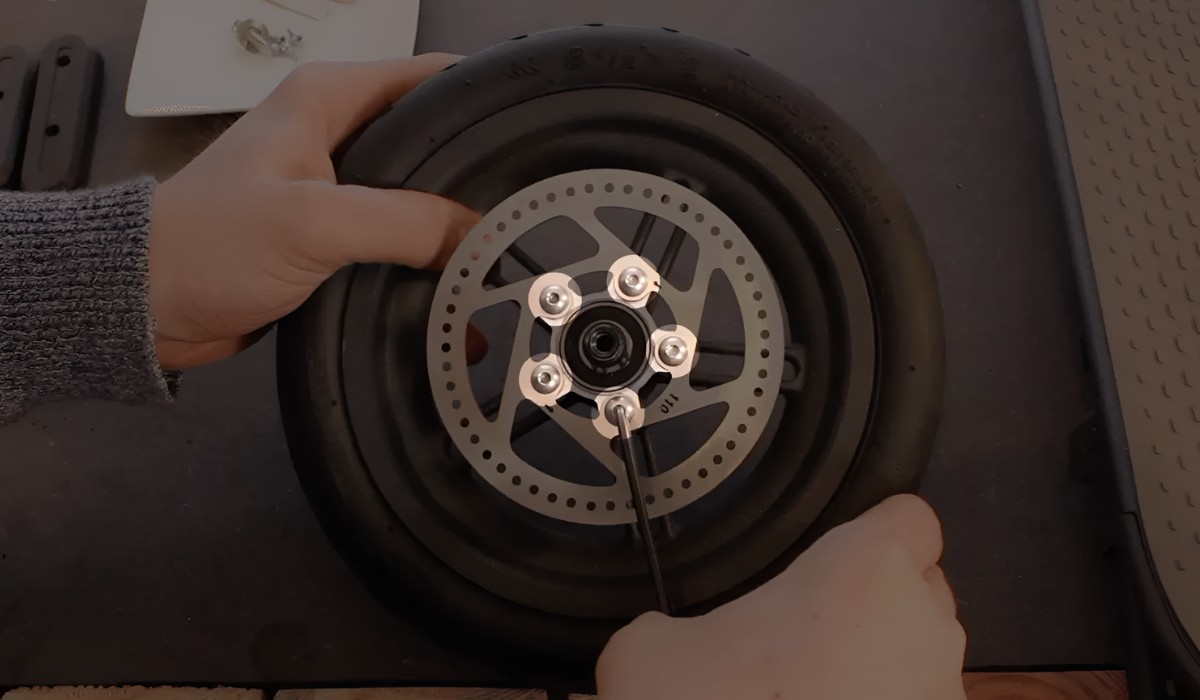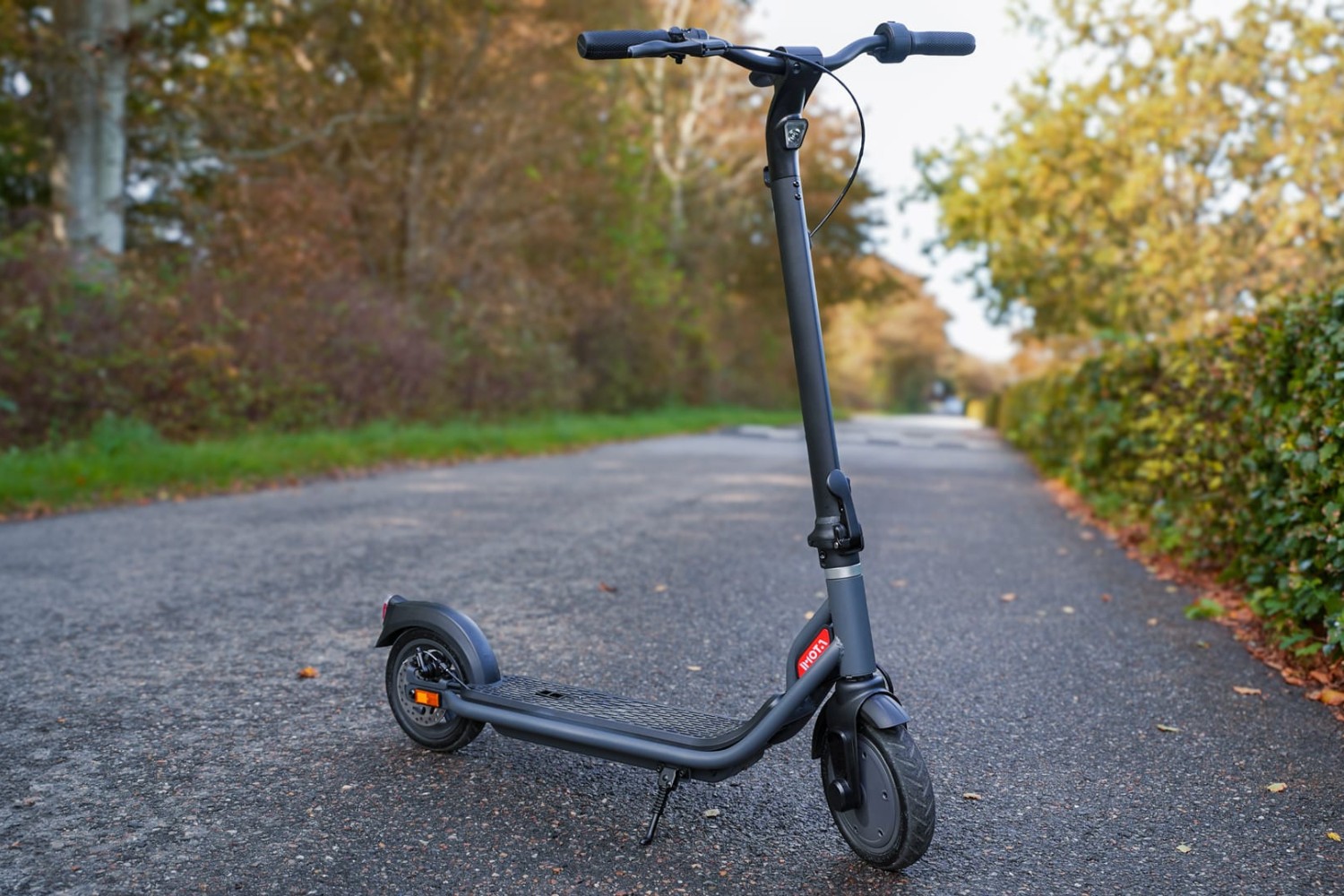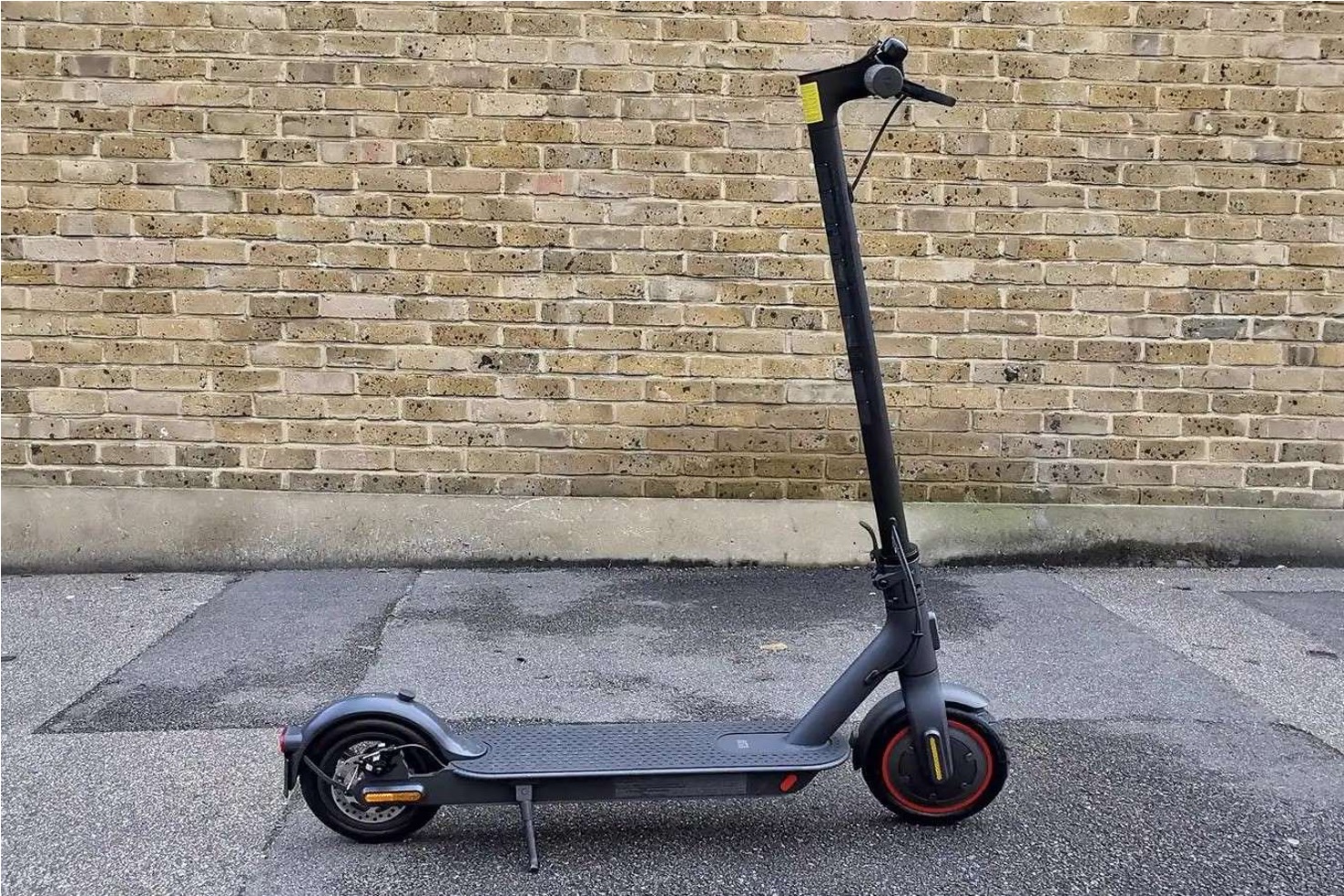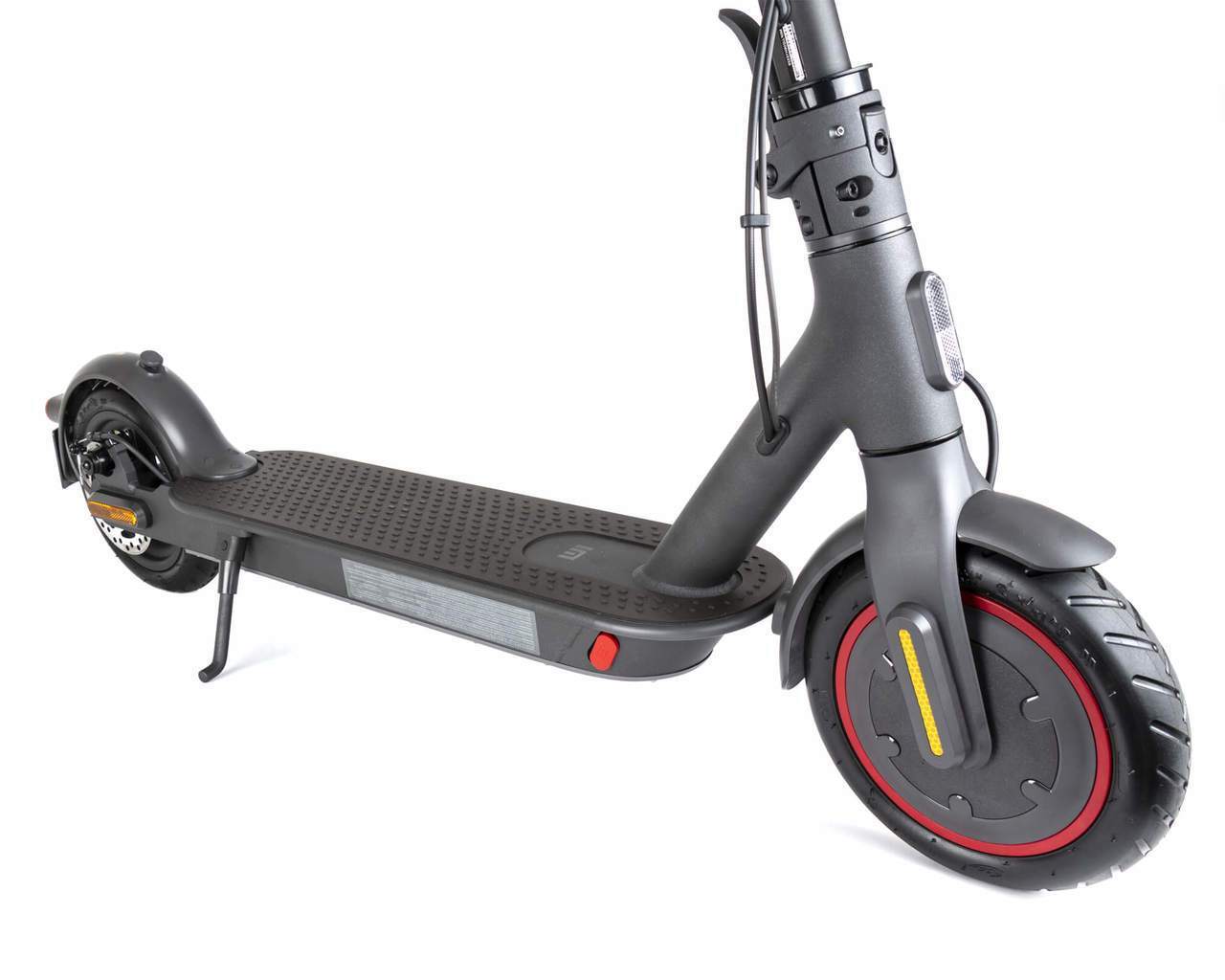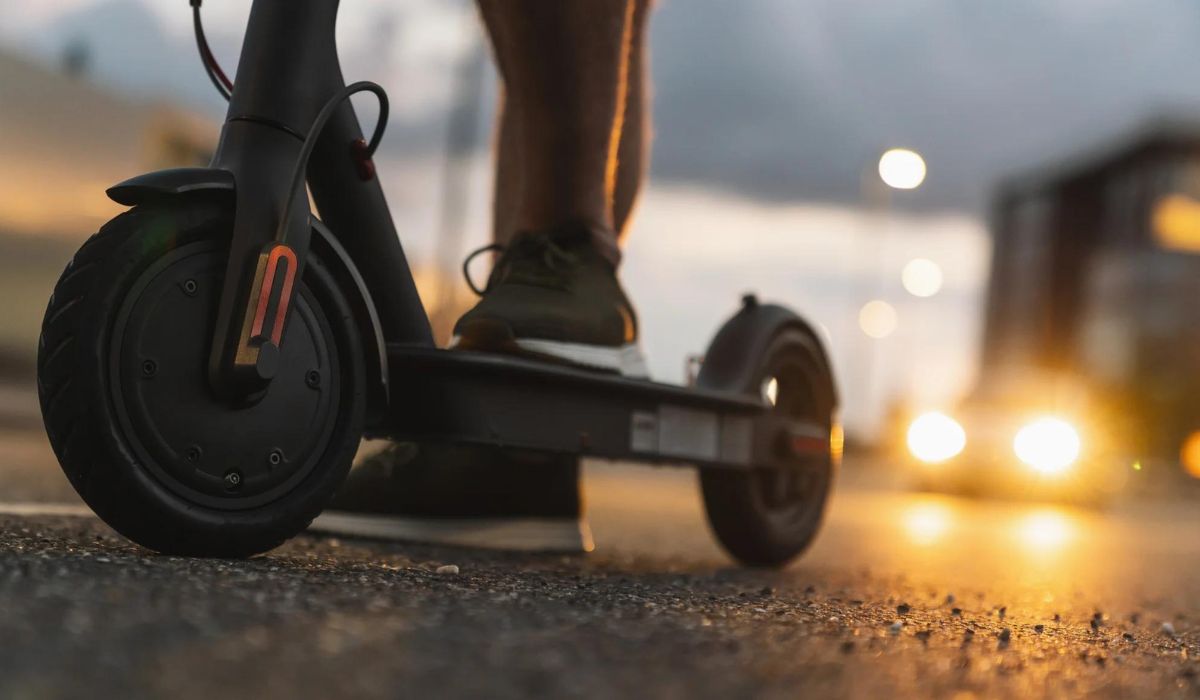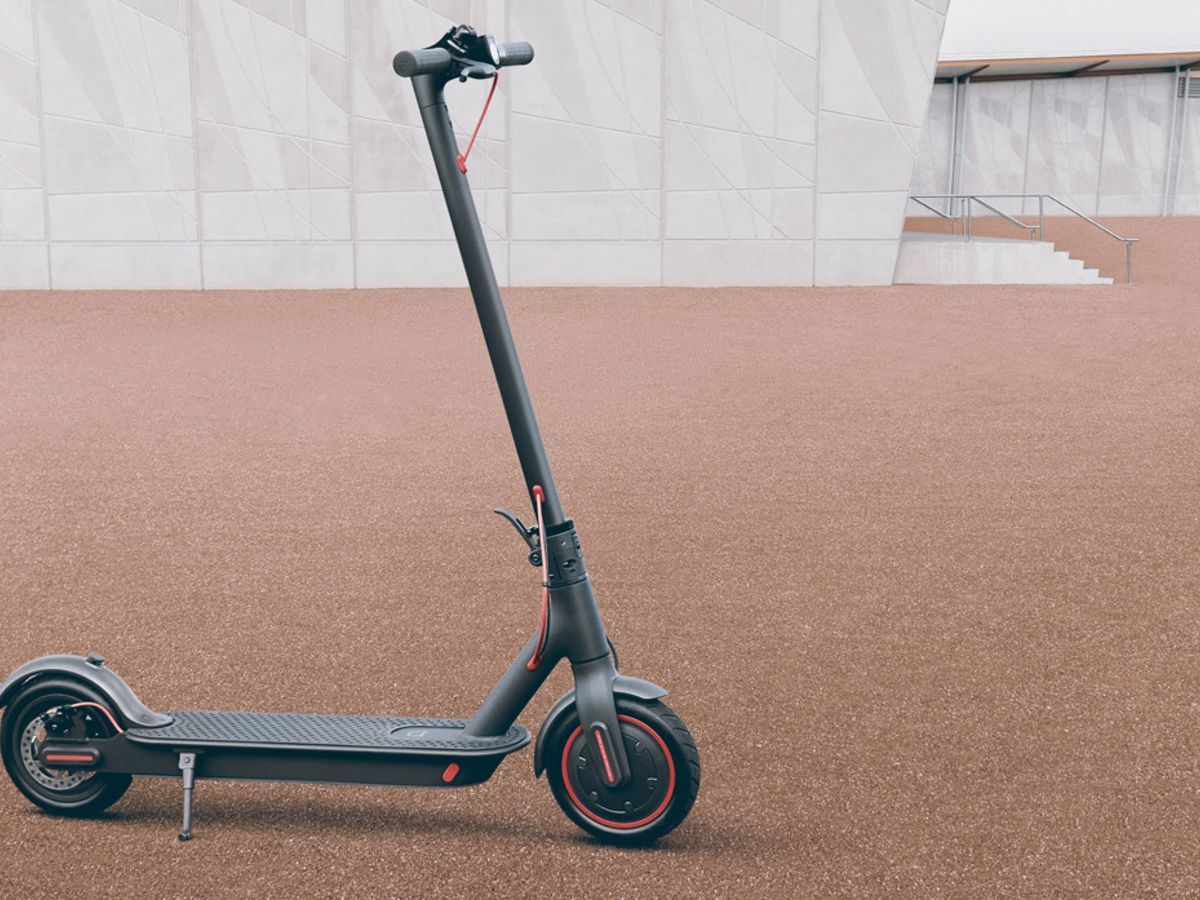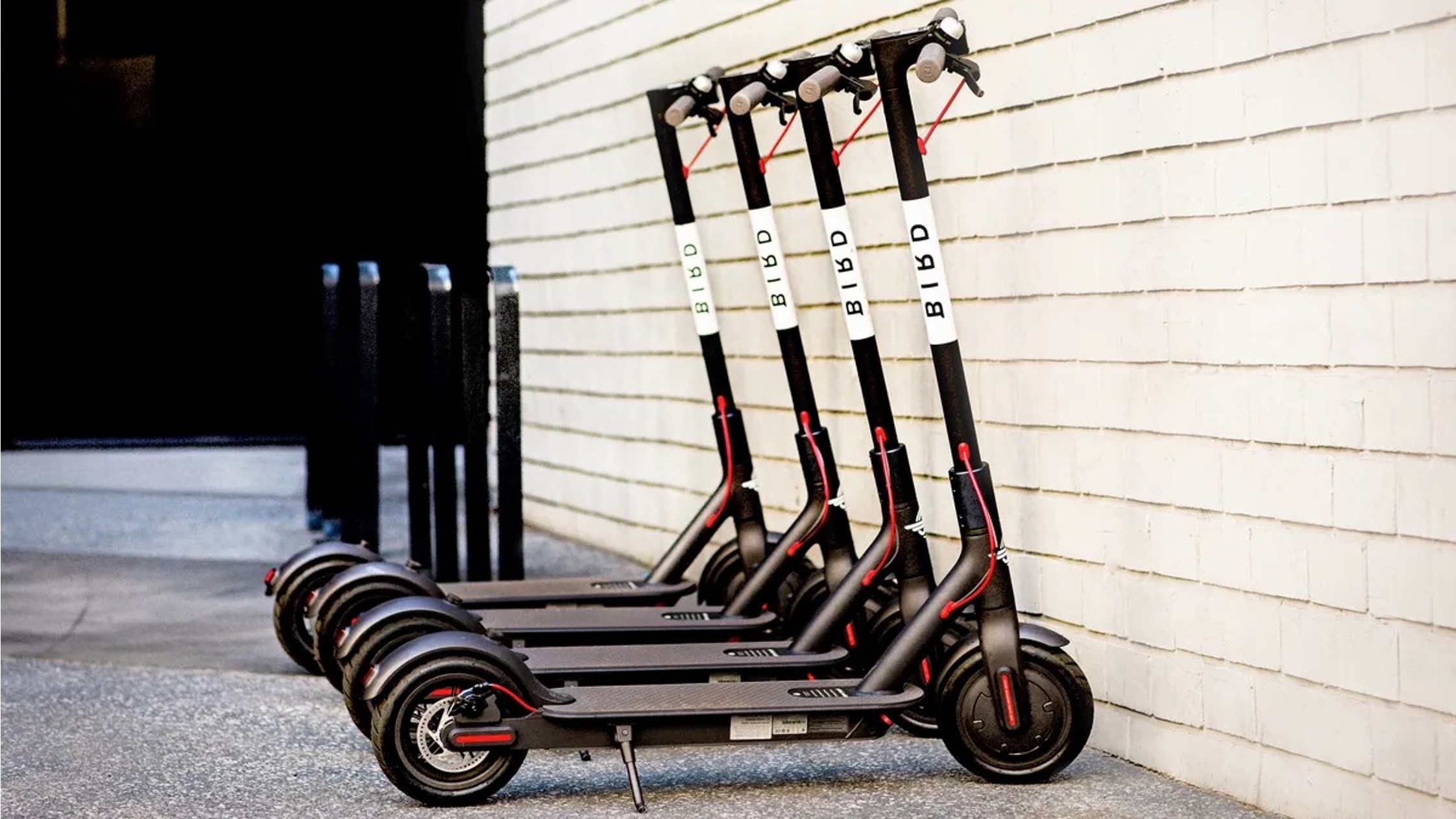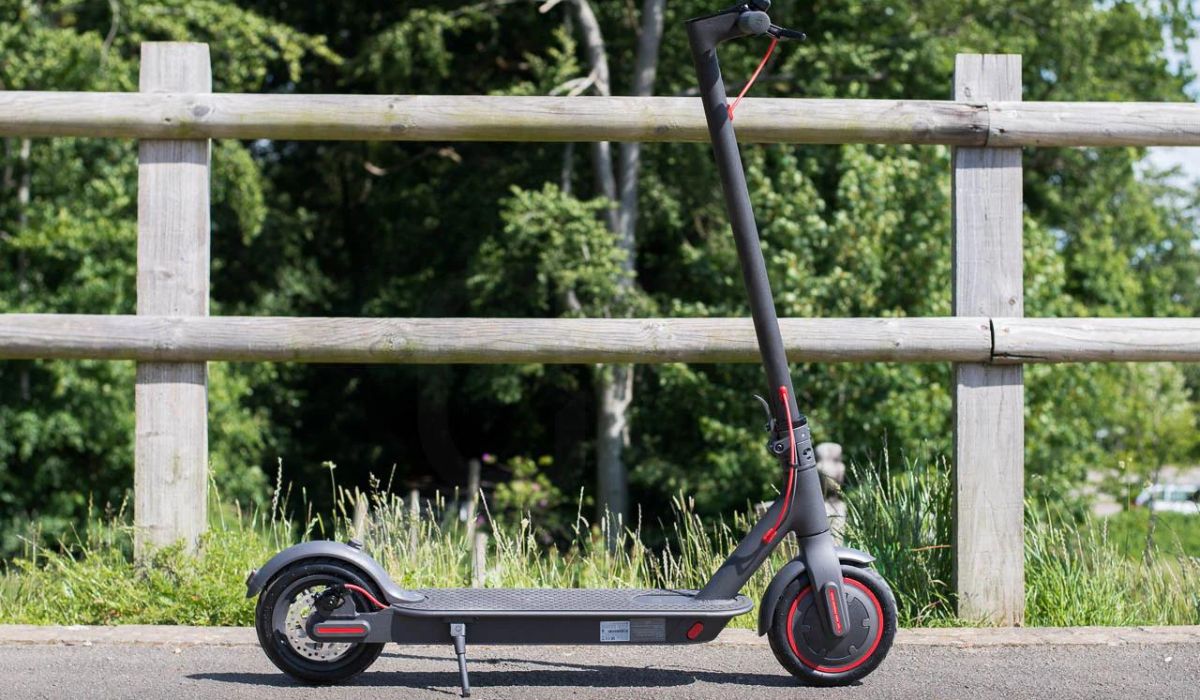Introduction
Welcome to the comprehensive DIY guide on changing the tire of your Xiaomi scooter! Whether you're an experienced rider or a newcomer to the world of electric scooters, knowing how to change a tire is a valuable skill that can save you time and money. A punctured or worn-out tire can disrupt your ride and compromise your safety, so being able to replace it on your own is empowering and practical.
In this guide, we will walk you through the step-by-step process of changing the tire on your Xiaomi scooter. You'll learn about the tools and materials you'll need, as well as the essential preparation steps before diving into the tire replacement. We'll cover the meticulous process of removing the old tire and installing the new one, ensuring that you have a clear understanding of each crucial step. Additionally, we'll provide insights on properly inflating the tire and conducting final checks to guarantee a successful replacement.
By following this guide, you'll not only gain a deeper understanding of your Xiaomi scooter's mechanics but also develop the confidence to handle minor repairs and maintenance tasks on your own. Whether you're a DIY enthusiast or simply looking to expand your knowledge, this guide is designed to equip you with the skills and know-how to tackle the tire replacement process with ease.
So, grab your tools, roll up your sleeves, and let's dive into the world of Xiaomi scooter tire maintenance and replacement!
Tools and materials needed
Before embarking on the tire replacement journey, it's essential to gather the necessary tools and materials to ensure a smooth and efficient process. Here's a comprehensive list of what you'll need:
Tools:
- Tire levers: These are essential for prying the tire off the rim and easing the installation of the new tire.
- Wrench or socket set: To loosen and remove the wheel nuts or bolts, depending on your scooter model.
- Screwdriver: For certain scooter models, a screwdriver may be needed to access and remove the wheel assembly.
- Pliers: Useful for handling small components and adjusting the tire valve.
- Tire pressure gauge: To accurately measure the tire pressure before and after installation.
- Utility knife: For cutting and trimming any excess material during the tire replacement process.
Materials:
- Replacement tire: Ensure that the tire size matches the specifications of your Xiaomi scooter model.
- Inner tube (if applicable): Some scooter tires are equipped with inner tubes, which may need replacement if damaged.
- Bike or tire pump: To inflate the new tire to the recommended pressure.
- Lubricant: A small amount of lubricant can aid in the tire installation process, making it easier to fit the tire onto the rim.
- Clean cloth: For wiping and cleaning the wheel assembly and tire components.
- Protective gloves: To keep your hands clean and protected during the tire replacement.
By having these tools and materials at your disposal, you'll be well-prepared to tackle the tire replacement process with confidence and precision. Each item serves a specific purpose in ensuring a successful tire replacement, allowing you to maintain your Xiaomi scooter's performance and safety standards. With everything in place, you're ready to move on to the next step and begin the preparation for the tire replacement process.
Step 1: Preparation
Before diving into the physical aspect of changing the tire on your Xiaomi scooter, it's crucial to lay the groundwork for a seamless and efficient tire replacement process. Preparation plays a pivotal role in ensuring that the subsequent steps unfold smoothly, allowing you to approach the task with clarity and confidence.
1.1 Clear Workspace
Begin by selecting a well-lit and spacious area to work on your Xiaomi scooter. Ensure that the surface is level and stable, providing ample room for maneuvering around the scooter. Clear any clutter or obstacles that may hinder your movement and access to the scooter's wheels.
1.2 Safety First
Prioritize safety by donning protective gloves to shield your hands from dirt, grease, and any sharp edges during the tire replacement process. Additionally, consider wearing eye protection to safeguard your eyes from debris or small components that may dislodge during the tire removal and installation.
1.3 Secure the Scooter
Stabilize the scooter by engaging the kickstand and ensuring that it is firmly positioned on the ground. If necessary, use additional support, such as wheel chocks or blocks, to prevent any unintended movement of the scooter while you work on the tire.
1.4 Gather Essential Tools and Materials
Refer to the comprehensive list of tools and materials outlined earlier and gather them within easy reach. Having all the necessary items at hand will streamline the tire replacement process and minimize interruptions as you progress through each step.
1.5 Review the Scooter Manual
Consult your Xiaomi scooter's manual or online resources to familiarize yourself with the specific tire replacement guidelines and any manufacturer recommendations. Understanding the nuances of your scooter model and its tire assembly will empower you to approach the replacement process with precision and insight.
1.6 Assess the Tire Condition
Before proceeding, inspect the old tire for signs of damage, wear, or punctures. This assessment will provide valuable insights into the underlying issues that led to the tire replacement, allowing you to address any potential concerns during the process.
By meticulously preparing for the tire replacement, you set the stage for a methodical and successful endeavor. With your workspace organized, safety measures in place, and a clear understanding of the scooter's tire assembly, you're now ready to embark on the next step: removing the old tire from your Xiaomi scooter.
Step 2: Removing the old tire
Removing the old tire from your Xiaomi scooter is a critical step in the tire replacement process. It requires precision and attention to detail to ensure that the tire is safely and effectively dismounted from the wheel assembly. Here's a detailed breakdown of the steps involved in removing the old tire:
2.1 Loosening the Wheel Nuts
Using a wrench or socket set, carefully loosen the wheel nuts or bolts that secure the wheel assembly to the scooter frame. It's important to follow the specific loosening sequence recommended for your scooter model to prevent any imbalance or strain on the wheel.
2.2 Elevating the Scooter
Once the wheel nuts are loosened, carefully elevate the scooter using a suitable stand or lift, ensuring that the wheel is off the ground and can rotate freely. This elevation provides convenient access to the wheel and simplifies the tire removal process.
2.3 Deflating the Tire
Before proceeding further, use a tire pressure gauge to fully deflate the old tire. This step is crucial for minimizing resistance during the tire removal and preventing any sudden release of pressure that could pose a safety risk.
2.4 Tire Removal
Position the tire levers between the tire and the rim, gently prying the tire away from the rim's edge. Work your way around the tire, gradually releasing it from the rim. Exercise caution to avoid damaging the wheel or the tire bead during this process.
2.5 Inspecting the Wheel Assembly
With the old tire removed, take the opportunity to inspect the wheel assembly for any signs of damage, corrosion, or debris. Clean the rim and inner wheel components using a clean cloth to ensure a smooth and debris-free surface for the new tire installation.
By meticulously following these steps, you can effectively remove the old tire from your Xiaomi scooter, setting the stage for the subsequent installation of the new tire. With the tire removed and the wheel assembly inspected, you're now ready to proceed to the next phase of the tire replacement process: installing the new tire onto your Xiaomi scooter.
Step 3: Installing the new tire
With the old tire successfully removed and the wheel assembly inspected, it's time to embark on the pivotal phase of installing the new tire onto your Xiaomi scooter. This process demands precision, patience, and attention to detail to ensure that the new tire is securely and accurately fitted to the wheel assembly. Here's a comprehensive breakdown of the steps involved in installing the new tire:
3.1 Tire Inspection and Preparation
Before proceeding with the installation, thoroughly inspect the new tire for any defects, irregularities, or foreign objects that may have been introduced during storage or handling. Check the tire's tread pattern and sidewalls for consistency and ensure that it aligns with the specifications of your Xiaomi scooter model. Additionally, examine the tire bead to confirm that it is intact and free from any damage that could impede the installation process.
3.2 Lubricating the Tire Bead
To facilitate the tire installation, apply a small amount of lubricant to the tire bead and the inner rim surface. This lubrication reduces friction and eases the fitting process, allowing the tire to slide onto the rim smoothly. Exercise caution to apply the lubricant sparingly, ensuring that it does not come into contact with the tire tread or braking surfaces.
3.3 Fitting the New Tire
Position the new tire next to the wheel assembly, aligning the tire's rotation direction with the scooter's intended forward movement. Starting at the valve stem, carefully guide the tire bead onto the rim, ensuring that it sits evenly and uniformly around the circumference of the wheel. Use gentle pressure and tire levers if necessary to coax the tire onto the rim, taking care to avoid excessive force that could damage the tire or the wheel assembly.
3.4 Seating the Tire Bead
Once the tire is partially fitted onto the rim, proceed to seat the tire bead by applying controlled pressure to the sidewalls. Work your way around the tire, ensuring that the bead is uniformly seated on the rim's edge. This step may require patience and finesse, as ensuring a proper bead seat is crucial for the tire's stability and performance.
3.5 Final Inspection and Alignment
After the tire is fully seated on the rim, visually inspect the tire's position and alignment to verify that it sits evenly and concentrically on the wheel assembly. Check for any signs of bead misalignment or irregular seating, and make any necessary adjustments to ensure a uniform fit.
By meticulously following these steps, you can effectively install the new tire onto your Xiaomi scooter, setting the stage for the subsequent inflation and testing phases. With the new tire securely in place and aligned with precision, you're now prepared to proceed to the next critical step: inflating the tire to the recommended pressure.
Step 4: Inflating the tire
Inflating the newly installed tire is a crucial step that directly impacts the performance, safety, and longevity of your Xiaomi scooter. Proper tire pressure ensures optimal traction, stability, and handling, contributing to a smooth and secure riding experience. Here's a detailed guide on inflating the tire to the recommended pressure:
4.1 Refer to Manufacturer Specifications
Before proceeding with the inflation process, refer to your Xiaomi scooter's manual or online resources to determine the recommended tire pressure for the front and rear tires. The manufacturer's specifications provide valuable insights into the ideal pressure range, ensuring that you achieve the optimal balance between comfort, performance, and safety.
4.2 Use a Reliable Tire Pressure Gauge
Select a reliable and accurate tire pressure gauge to measure the current pressure within the newly installed tire. Ensure that the gauge is well-calibrated and compatible with the valve stem of your scooter's tire, allowing for precise and dependable pressure readings.
4.3 Valve Stem Inspection and Connection
Inspect the valve stem for any signs of damage, debris, or wear that could compromise the inflation process. Remove the valve stem cap and securely connect the tire pressure gauge to the valve, ensuring a tight and leak-free connection to obtain an accurate pressure reading.
4.4 Inflate to Recommended Pressure
Using a bike or tire pump equipped with a pressure gauge, gradually inflate the tire to the recommended pressure specified by the manufacturer. Exercise caution to avoid overinflating the tire, as excessive pressure can lead to reduced traction, uneven wear, and potential safety hazards. Monitor the pressure gauge closely and periodically check the tire's inflation level to achieve the precise recommended pressure.
4.5 Verify and Adjust Pressure
Once the tire reaches the recommended pressure, carefully detach the pump and reseal the valve stem with the cap. Use the tire pressure gauge to verify the accuracy of the inflation, ensuring that the pressure aligns with the manufacturer's specifications. If necessary, make minor adjustments to achieve the precise pressure level, taking into account any fluctuations that may occur during the inflation process.
4.6 Final Inspection and Testing
After inflating the tire to the recommended pressure, visually inspect the tire's sidewalls and tread for any irregularities, bulges, or signs of overinflation. Confirm that the tire appears uniformly inflated and free from visible defects. To validate the tire's integrity, conduct a brief test ride in a controlled environment, assessing the scooter's handling, stability, and responsiveness to ensure that the newly inflated tire performs optimally.
By meticulously following these steps, you can effectively inflate the newly installed tire on your Xiaomi scooter, ensuring that it meets the manufacturer's specifications and contributes to a safe and enjoyable riding experience. With the tire inflated to the recommended pressure and thoroughly inspected, you're now prepared to proceed to the final phase: conducting comprehensive checks and testing to validate the success of the tire replacement process.
Step 5: Final checks and testing
With the new tire installed and inflated to the recommended pressure, conducting thorough final checks and testing is essential to validate the success of the tire replacement process. This critical phase ensures that the scooter is primed for safe and reliable operation, providing peace of mind for the rider. Here's a detailed breakdown of the final checks and testing process:
5.1 Visual Inspection
Begin by conducting a comprehensive visual inspection of the newly installed tire, focusing on its alignment, seating, and overall condition. Verify that the tire sits uniformly on the rim, with the bead securely seated and aligned with the wheel assembly. Check for any signs of irregularities, bulges, or visible damage that may indicate improper installation or potential safety concerns.
5.2 Lug Nut/Bolt Torque
If your Xiaomi scooter utilizes lug nuts or bolts to secure the wheel assembly, ensure that they are torqued to the manufacturer's specifications. Using a torque wrench, carefully tighten the lug nuts or bolts to the recommended torque level, promoting optimal wheel retention and stability. This step is crucial for preventing wheel imbalance and potential loosening during operation.
5.3 Functional Testing
Before returning the scooter to regular use, conduct functional testing to evaluate the responsiveness and stability of the newly replaced tire. Gradually roll the scooter forward and backward, assessing the tire's interaction with the ground surface and the scooter's overall handling. Pay attention to any unusual vibrations, wobbling, or noise that may indicate alignment issues or improper tire installation.
5.4 Brake System Check
Verify the functionality of the scooter's brake system, ensuring that the newly installed tire does not impede the braking performance. Test the brakes in a controlled environment, assessing their responsiveness and effectiveness. Confirm that the scooter comes to a smooth and controlled stop without any signs of tire-related interference or irregularities.
5.5 Test Ride
Once the visual inspection, torque verification, and functional testing are completed, embark on a brief test ride in a safe and controlled area. Assess the scooter's handling, stability, and overall performance, paying attention to any changes in ride quality or behavior. Verify that the scooter maintains its intended trajectory and stability, indicating a successful tire replacement and inflation process.
By meticulously conducting these final checks and testing procedures, you can confidently validate the success of the tire replacement and ensure that your Xiaomi scooter is ready for safe and reliable operation. With the comprehensive evaluation complete, you can look forward to enjoying a smooth and secure riding experience, knowing that the tire replacement process has been executed with precision and attention to detail.
Conclusion
Congratulations on successfully completing the tire replacement process for your Xiaomi scooter! By following this comprehensive DIY guide, you've not only gained valuable insights into the mechanics of your scooter but also developed the confidence and skills to handle essential maintenance tasks with precision and expertise.
Throughout this journey, you've embarked on a meticulous process, from the initial preparation and tire removal to the installation, inflation, and comprehensive testing of the new tire. Each step was carefully crafted to empower you with the knowledge and practical know-how to ensure a seamless and successful tire replacement.
As you reflect on this experience, it's important to recognize the significance of your newfound expertise. By mastering the art of tire replacement, you've unlocked the potential to address unexpected challenges and maintain your scooter's performance without relying on external assistance. This self-reliance not only saves time and resources but also fosters a deeper connection with your Xiaomi scooter, enhancing your overall ownership experience.
Furthermore, the skills and insights gained from this tire replacement endeavor extend beyond the specific task at hand. You've honed your attention to detail, precision in execution, and commitment to safety, all of which are invaluable traits that transcend the realm of scooter maintenance. These attributes can be applied to various aspects of your life, reinforcing the notion that every endeavor, no matter how seemingly routine, offers opportunities for growth and learning.
As you bask in the satisfaction of a job well done, it's essential to carry forward the spirit of empowerment and curiosity that drove you through this tire replacement journey. Embrace future maintenance tasks and challenges with the same enthusiasm and determination, knowing that each experience enriches your knowledge and capabilities.
Ultimately, this guide serves as a testament to your ability to conquer new frontiers, embrace hands-on learning, and emerge as a more capable and resourceful individual. Your Xiaomi scooter stands as a symbol of your dedication to mastery and self-sufficiency, reflecting the harmonious synergy between rider and machine.
So, as you embark on your next adventure with your Xiaomi scooter, may the confidence and expertise gained from this tire replacement journey propel you forward, enriching your riding experiences and reinforcing the bond between you and your trusted companion on the road. Safe travels and may your scooter continue to be a source of joy and empowerment in your life.







